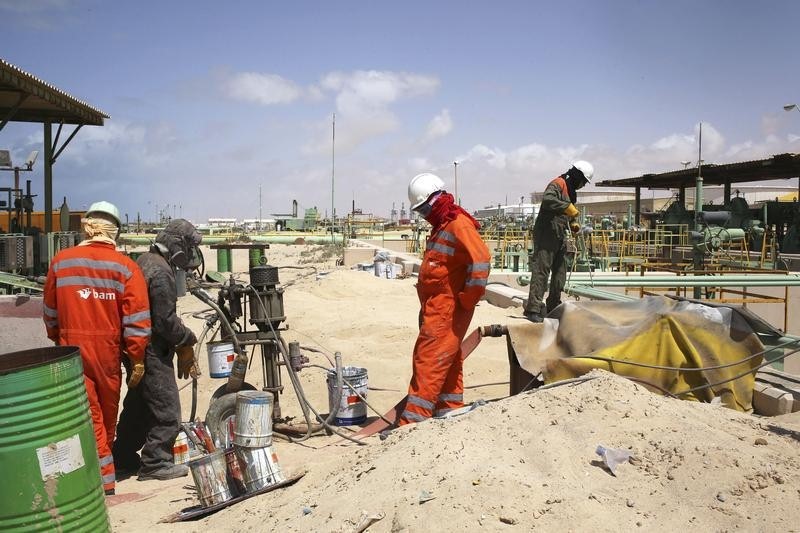S&P 500 cuts losses as Nvidia climbs ahead of results
(Bloomberg) -- Libya’s state oil company reopened another port, the third to resume operation in less than a week, as a political truce takes hold in the OPEC member’s devastating civil war.
The National Oil Corp. is ending force majeure -- a legal status protecting a party that can’t fulfill a contract for reasons beyond its control -- at Zueitina in eastern Libya after a “significant improvement” in security there, it said Tuesday. The NOC allowed exports to resume days earlier from the Hariga and Brega terminals. The three ports had been shut down since January as part of a wider blockade.
The NOC said it’s evaluating security at Libya’s other export terminals as the country with Africa’s largest crude reserves edges closer to reviving its battered oil industry. Production nationwide will more than double by next week to 260,000 barrels a day, the company said late Monday.
The three eastern ports were closed eight months ago after Khalifa Haftar, a Russian-backed commander who controls eastern Libya, blockaded energy facilities in his struggle to unseat the United Nations-supported government in the western capital, Tripoli. Libya’s daily crude output slumped as a result to less than 100,000 barrels from 1.2 million last year. The NOC said Wednesday that it shipped $38.2 million of oil, natural gas and condensate in July, the lowest monthly figure this year.
Hariga, Brega, and Zueitina are now classified as “safe ports,” the NOC said in a statement. “The remaining oil fields and ports are being evaluated according to the safety and security standards in force in the national oil sector.”
Oil facilities have been the main prize of a civil war now almost a decade old, with different groups closing or sabotaging them to press political and economic demands. The industry’s gradual reopening began after Haftar said on Sept. 18 that he would lift his blockade. The NOC has cited the dangers of resuming oil production where armed forces are close by.
Es Sider and Ras Lanuf, the country’s largest and third-largest oil ports, remain closed, as does the Zawiya terminal, which ordinarily exports crude from the country’s biggest field, Sharara.
Repairs Needed
The amount of extra oil Libya can export will also depend on how quickly it can fix wellheads, pipelines and storage tanks that have been neglected or damaged during the conflict. Production will increase as workers return to fields that feed Brega and Hariga, and oil tankers will start arriving at both ports to load crude, the NOC said.
The Suezmax tanker Delta Hellas will reach Hariga on Wednesday to load 1 million barrels of crude from storage, thereby enabling production at the Sarir and Messla oil fields to resume immediately, Arabian Gulf Oil Co., which operates both deposits, said on its Facebook page.
Crude storage tanks at Libyan export terminals can hold 24.4 million barrels, but only Hariga and Zueitina are much more than 50% full and able to “sustain an immediate increase in exports” before output resumes at oil fields, OilX analysts including Juan Carlos Rodriguez and Florian Thaler wrote in a report.
Although previous agreements to reopen Libya’s oil industry have failed, Goldman Sachs Group Inc (NYSE:GS). reckons exports could reach 550,000 barrels a day by year-end. Bloomberg Intelligence thinks a figure of close to 1 million is possible.
“Should the implementation of the agreement prove successful, a big if, production could climb to 500,000 barrels a day within a month,” Mohammad Darwazah, an analyst at consultant Medley Global Advisors, said in a note. “Any further incremental additions will hinge on how quickly Sharara can restart and ramp up, and whether the NOC agrees to reopen Es Sider and Ras Lanuf.” Both ports are closed due to the presence of Russian mercenaries.
(Updates with details throughout.)
©2020 Bloomberg L.P.
